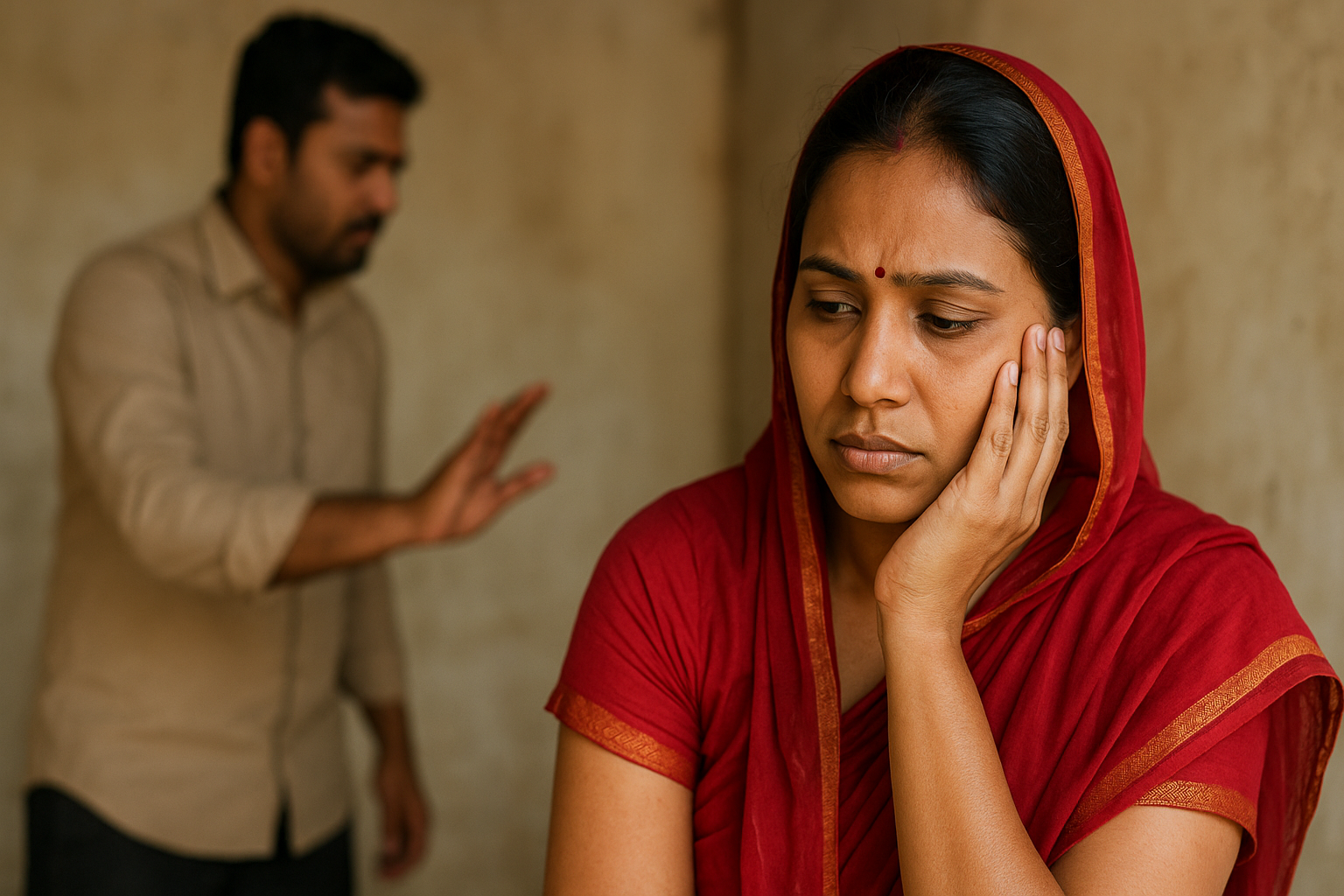Authored By: Soumali Chatterjee
Calcutta University
Abstract
Every woman dreams of spending her married life happily. However, in many instances, women face abuse at the hands of their in-laws due to dowry-related issues. Every woman deserves a dignified place in society.
The term “dowry death” refers to an unnatural or suspicious death that occurs within a few years of a woman’s marriage, particularly when it is linked to dowry demands or abuse by her husband or his family. Dowry deaths are a tragic and deeply disturbing phenomenon in India. Despite legislative efforts, these deaths continue to claim numerous lives each year, pointing to the urgent need for more effective law enforcement and broader societal reform. Dowry death is a form of gender-based violence and a serious consequence of dowry-related disputes. Dissatisfaction with the dowry often leads to domestic abuse, which may result in the woman’s death. The government has enacted various laws to protect women, including the Dowry Prohibition Act, 1961.
Key Words: Dowry death, domestic abuse, gender-based violence, unnatural death.
Introduction
Marriage is a social institution that legally acknowledges the union between two individuals, generally involving a commitment to share life as partners. It incorporates emotional, social, legal, and spiritual dimensions, with its practices differing across cultures and legal systems. In most societies, marriage is regarded as a foundational element of family life, associated with various rights and responsibilities. However, for many women in India, marriage can become a source of suffering due to dowry-related abuse.
Although the term ‘dowry’ is not explicitly defined in the Indian Penal Code, the Indian legal system recognized the gravity of dowry-related violence by introducing Section 304B to the Indian Penal Code through the Dowry Prohibition (Amendment) Act, 1986, which came into effect on November 19, 1986.
Despite being outlawed, the dowry practice remains deeply embedded in Indian society, perpetuating gender-based discrimination and violence. Dissatisfaction with dowry frequently results in cruelty, harassment, and, in extreme cases, the unnatural death of a woman within seven years of marriage, often caused by burns, bodily harm, or other mysterious circumstances.
Background
The prevalence of dowry deaths in India is shaped by a combination of historical, cultural, and socio-economic elements. Originally, dowry was a voluntary tradition involving the giving of gifts to the bride or groom’s family. Over time, it evolved into a coercive system of demanding money, goods, or property. Several key factors contribute to the persistence of dowry deaths:
- Patriarchal Society: India’s patriarchal structure often considers women subordinate to men, fostering their exploitation. The dowry system is a reflection of this imbalance, treating women as commodities with monetary value.
- Economic Factors: Financial disparities and material expectations from the groom’s family often lead to dowry demands. Families feel compelled to meet these demands to ensure their daughter’s marriage.
- Cultural Norms: In certain communities, dowry is an entrenched practice, and families comply with such demands due to societal pressure and the fear of ostracism.
- Lack of Awareness and Education: A lack of understanding regarding legal rights and the consequences of dowry violence helps sustain the practice. Education empowers individuals to challenge such harmful norms.
- Inadequate Legal Enforcement: Though laws like the Dowry Prohibition Act, 1961 and Section 304B of the IPC exist, inconsistent enforcement due to corruption, resource limitations, and social bias undermines their effectiveness.
- Social Stigma: Victims and their families often face stigma, deterring them from reporting abuse or seeking justice. This fosters a culture of silence and impunity.2
Main Body
Analyse the Nature of Dowry Death:
Dowry-related offences typically occur in the privacy of the matrimonial home, often in secrecy. This makes it difficult to secure independent and direct evidence essential for conviction.
The nature of dowry death is multifaceted, marked by domestic violence, cruelty, and continuous harassment by the husband and in-laws over dowry demands. These deaths frequently occur under unnatural conditions such as burns, poisoning, or physical assault, which are often disguised as accidents or suicides. Dowry deaths stem from patriarchal mindsets that view women as inferior, perpetuated by cultural norms that condone or ignore violence against them. The consequences are devastating, leading to the loss of life, immense trauma for the victim’s family, and social stigma that compounds their suffering.
Characteristics:
- Domestic Violence: These deaths generally happen within the domestic sphere, where women are subjected to emotional, physical, and psychological abuse.
- Demand for Dowry: The main driving factor behind dowry deaths is the continued demand for money, jewelry, or other valuables.
- Cruelty and Harassment: Women face persistent cruelty and abuse by their husbands and in-laws over dowry expectations.
- Unnatural Deaths: Often, the deaths are unnatural—such as through burning, poisoning, or severe injury—and are staged to appear accidental or suicidal.
Relevant Cases:
- Kamesh Panjiyar v. State of Bihar AIR 2005 SC 785:
The Supreme Court identified the essentials of dowry death under Section 304B IPC: - Death due to burns or bodily injury within seven years of marriage
- Evidence of cruelty or harassment by the husband or his relatives
- A clear link to dowry demand.
The husband was convicted under Section 304B and sentenced to ten years, later reduced to seven years and upheld by the Supreme Court. - Bachni Devi v. State of Haryana AIR 2011 SC 1098:
The Court held that any demand for property or valuable security linked to marriage constitutes a dowry demand. Both the husband and mother-in-law were convicted under Section 304B IPC and sentenced to seven years of rigorous imprisonment. - Rajinder Singh v. State of Punjab AIR 2015 SC 1359:
The Court elaborated on the term “soon before death,” stating it should reflect a continuing connection between dowry demand and the woman’s death. - Satbir Singh v. State of Haryana AIR 2021 SC 2627:
The Supreme Court ruled that “soon before” need not mean “immediately before.” A close link between the cruelty and the death is essential, and courts must exercise great caution.
Legal Framework:
- Dowry Prohibition Act, 1961: Criminalizes giving or receiving dowry.
- Section 304B IPC: Defines and penalizes dowry deaths.
- Section 498A IPC: Addresses cruelty by the husband or his relatives towards a woman.
Analysis of Opposing Views on Dowry Deaths:
Dowry Deaths are Due to Women’s Inferior Status:
While it’s true that gender inequality contributes to dowry deaths, it is important to see them as symptoms of broader social issues such as patriarchy, economic dependency, and lack of education.
Dowry Deaths are Rare:
This view is contradicted by official data. According to the NCRB, more than 7,000 dowry deaths were recorded in 2020 alone, proving the widespread nature of the issue.
Dowry Deaths Happen Because Families Give In to Demands:
While compliance with dowry demands may perpetuate the cycle, families often face intense pressure and coercion. The root cause lies in social attitudes, not simply in the victim’s family.
Dowry Deaths are Cultural and Should Not Be Interfered With:
Dowry deaths are violations of fundamental human rights. Culture cannot justify abuse. Social practices must evolve to uphold the dignity and rights of individuals.
Discussion
Implications of Dowry Deaths:
- Social Implications:
These deaths shatter families, leaving emotional and psychological scars. The associated stigma often prevents families from seeking justice. - Economic Implications:
The financial cost of dowry, followed by the economic loss due to the death of a woman who may be an earning member, can ruin families financially. - Legal Implications:
These cases burden the justice system and reveal the necessity for more effective investigation, prosecution, and conviction mechanisms.3 - Implications for Women’s Rights:
Dowry deaths violate a woman’s basic human rights, especially the rights to life and dignity. They highlight the pressing need for gender equality, empowerment, and social reform.4
Solutions or Recommendations:
- Education and Awareness:
Promote awareness campaigns that challenge harmful societal norms and emphasize gender equality. Engage communities to create collective responsibility. - Women’s Empowerment:
Encourage women’s economic independence through skill-building and employment. Education plays a pivotal role in improving their social and economic status.
Conclusion
Dowry deaths represent a grave issue in Indian society, claiming thousands of lives each year. Addressing this issue requires challenging societal attitudes through education and community engagement, empowering women, and enforcing strict legal measures. A united effort from the government, civil society, and individuals is essential to eradicate dowry deaths and promote an equitable society where women can live with dignity and security.
Reference(S):
- K D Gaur, “Textbook on Indian Penal Code” (7th Ed. 2023)
- “7 Ways Sexual Violence Laws Are Failing Survivors Around the World” (Equality Now, 24th November 2024) https://equalitynow.org accessed 10th May 2025
- Kunal Pandya, “Dowry Deaths in India: Legal Perspectives, Social Challenges, and Solution” (Legal Service India) https://legalserviceindia.com accessed 11th May 2025
- “Women’s Rights” – Wikipedia https://en.wikipedia.org accessed 11th May 2025
- Indian Penal Code, 1860
- Bhartiya Nyaya Sanhita, 2023
- Dowry Prohibition Act, 1961
1 K D Gaur, ‘Textbook on Indian Penal Code’ (7th Ed. 2023) P. 854
2 ‘7 ways Sexual Violence Laws are failing survivors around the World’ (Equality Now, 24th November 2024) https://equalitynow.org accessed 10th May 2025
3 Kunal Pandya, ‘Dowry Deaths in India: Legal Perspectives, Social Challenges, and Solution’ (Legal Service India) https://legalserviceindia.com accessed 11th May 2025
4 Women’s rights, (Wikipedia) https://en.wikipedia.org accessed 11th May 2025





